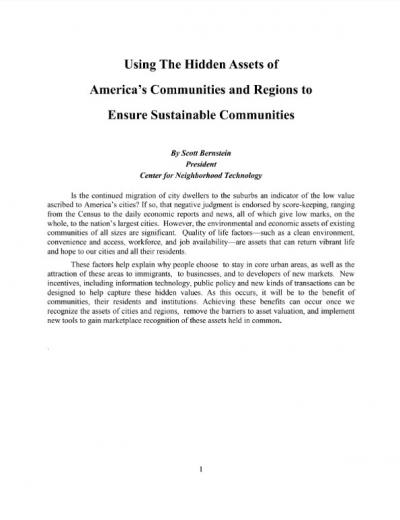Is the continued migration of city dwellers to the suburbs an indicator of the low value ascribed to America’s cities? If so, that negative judgment is endorsed by score-keeping, ranging from the Census to the daily economic reports and news, all of which give low marks, on the whole, to the nation’s largest cities. However, the environmental andeconomic assets of existing communities of all sizes are significant. Quality of life factors—such as a clean environment, convenience and access, workforce, and job availability—are assets that can return vibrant life and hope to our cities and all their residents.
These factors help explain why people choose to stay in core urban areas, as well as the attraction of these areas to immigrants, to businesses, and to developers of new markets. New incentives, including information technology, public policy and new kinds of transactions can be designed to help capture these hidden values. As this occurs, it will be to the benefit of communities, their residents and institutions. Achieving these benefits can occur once we recognize the assets of cities and regions, remove the barriers to asset valuation, and implement new tools to gain marketplace recognition of these assets held in common.





 Strengthening Transit Through Community Partnerships
Strengthening Transit Through Community Partnerships